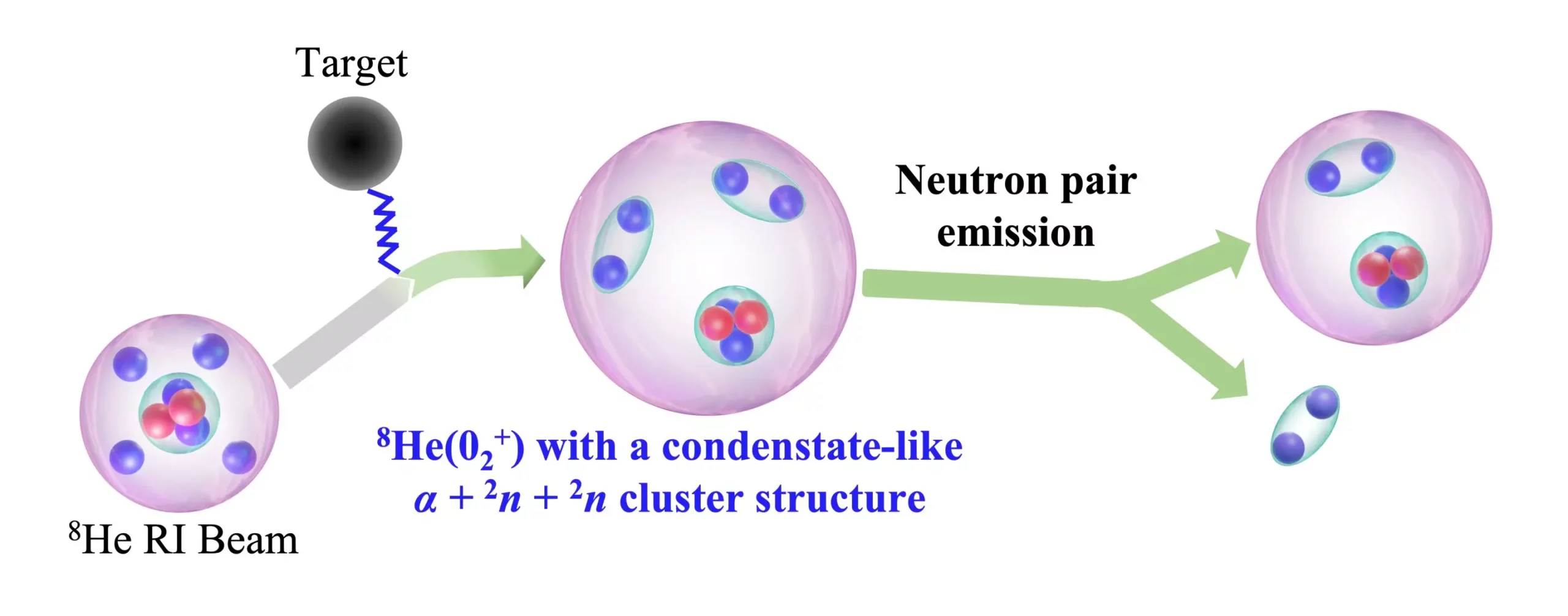The study conducted by researchers at Peking University in China has uncovered the mysterious 02+ state of 8He, shedding light on the novel cluster structure within this neutron-rich nucleus. This groundbreaking discovery has implications not only for understanding exotic nuclear structures but also for unraveling the mysteries surrounding neutron stars. In this article, we will delve into the details of this research and its significance in the fields of nuclear and astrophysics.
The conventional nuclear model, which assumes a single-particle picture with nucleons moving independently within a nucleus, has provided a solid understanding of nuclear structure and stability. However, when it comes to addressing exotic nuclei that are neutron-rich and unstable, this model encounters limitations. To overcome these limitations, the research team at Peking University set out to explore the structure of the neutron-rich nucleus 8He.
One of the key findings of the study is the identification of a condensate-like cluster structure within 8He. This structure consists of two strongly correlated neutron pairs, known as dineutron clusters, combined with an alpha cluster made up of four helium nuclei. The collective behavior of these clusters resembles that of Bose-Einstein condensates (BECs), a state of matter observed at extremely low temperatures where particles occupy the same quantum state. This analogy provides valuable insights into the nature of the cluster structure within 8He.
Experimental Observations
To observe the elusive 02+ state and the theorized cluster structure, the research team performed a nuclear scattering experiment at the RIKEN Nishina Center in Japan. This experimental endeavor aimed to scrutinize the distinctive characteristics of the cluster state, including its spin parity, isoscalar monopole transition strength, and the emission of strongly correlated neutron pairs. Remarkably, the results of the experiment aligned with theoretical predictions, confirming the existence of the condensate-like cluster structure.
The discovery of the 02+ state has implications beyond nuclear physics. It has the potential to enhance our understanding of astrophysical phenomena such as neutron stars and pulsars. The observed cluster structure in 8He aligns with the suggested onset of neutron superfluidity within the interiors of neutron stars, similar to the condensation of electron Cooper pairs in superconductors. This connection between nuclear physics and astrophysics opens up new avenues for studying cosmic phenomena and unveiling the intricate interplay between microscopic nuclei and macroscopic celestial bodies.
The Path Forward
Looking ahead, the researchers plan to extend their measurements to other neutron-rich nuclei near the neutron drip line, the limit of existence on the nuclear chart. By exploring systems consisting solely of neutrons, such as tetraneutrons and hexaneutrons, they hope to gain further insights into the evolution of the condensate-like cluster structure. Although the production and identification of such states pose challenges, the construction of worldwide radioactive ion-beam facilities and new detector systems offers promising opportunities for future studies in this field.
The groundbreaking research conducted by the team at Peking University has brought us one step closer to unraveling the mysteries of exotic nuclear structures and neutron stars. By observing the elusive 02+ state of 8He and uncovering its condensate-like cluster structure, this study not only validates theoretical predictions but also expands our understanding of the fundamental properties of nuclei. Furthermore, it highlights the interconnectedness between nuclear physics and astrophysics, showcasing their invaluable contributions to the exploration of the cosmos. With the door now open to further investigations, we can expect even more fascinating discoveries in the future that will revolutionize our understanding of the universe we inhabit.


Leave a Reply